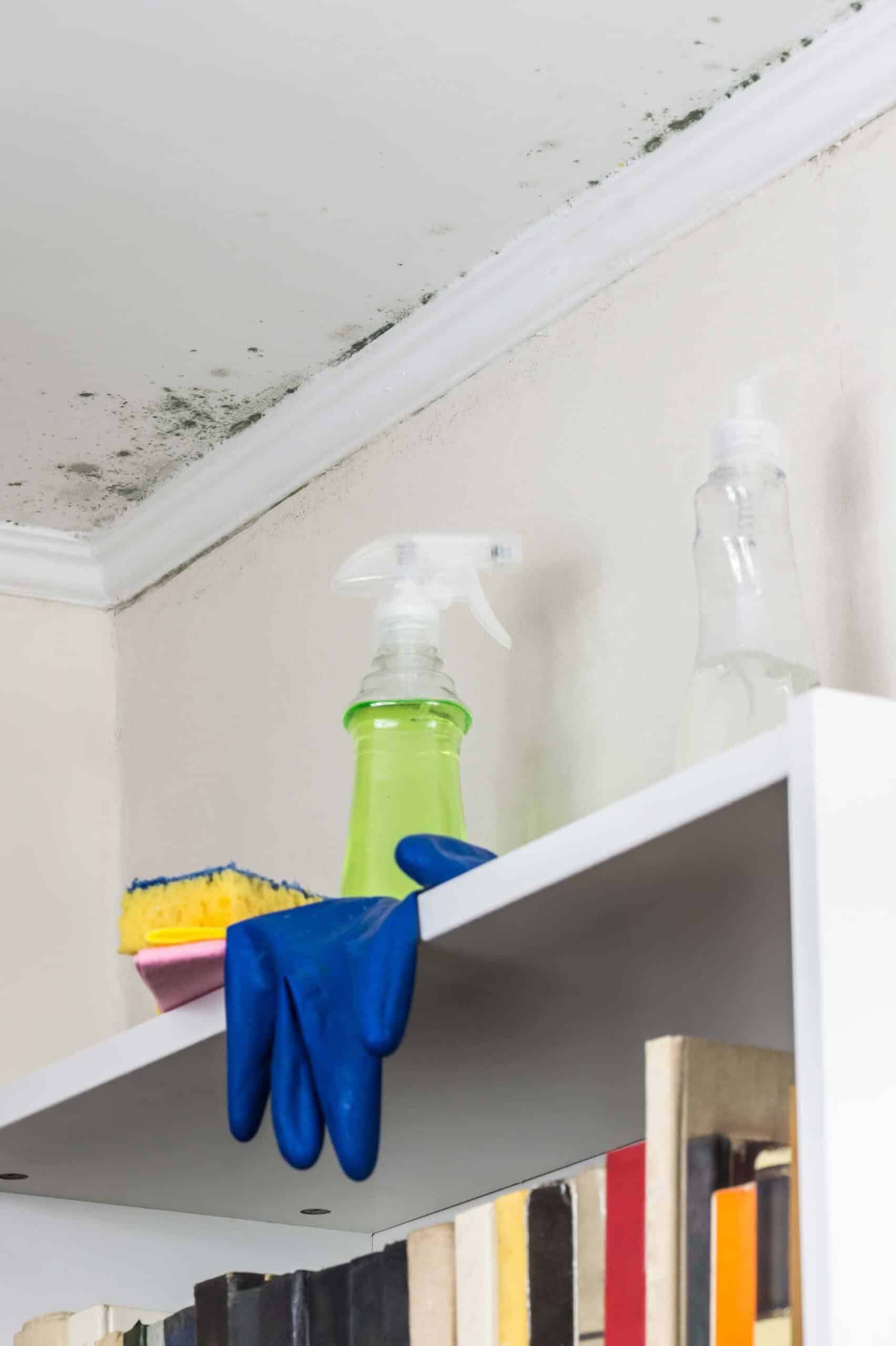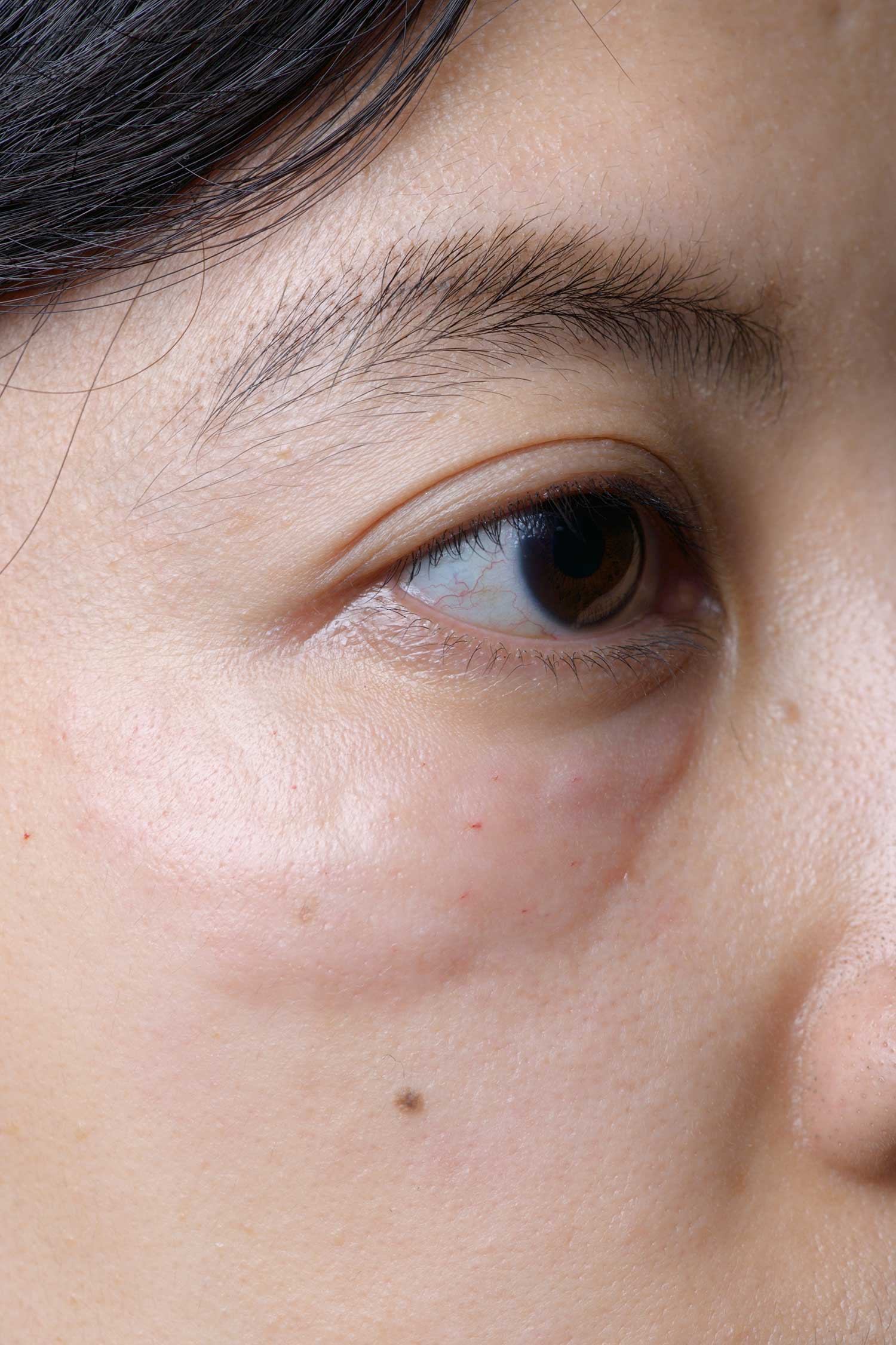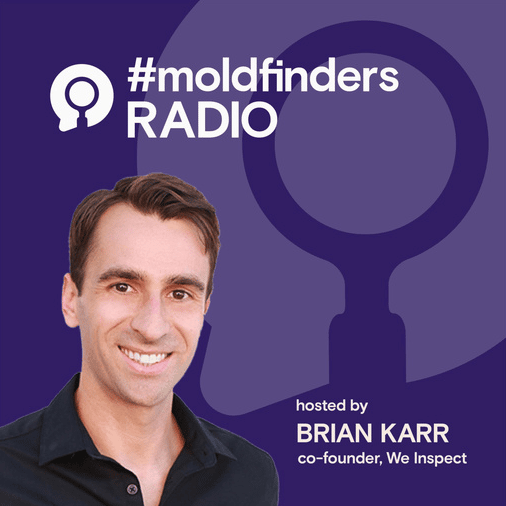Understanding Biotoxin Illness & Mold Exposure:
Your Path to Healing
At The Lyme Specialist, we know how overwhelming it can be to battle biotoxin illness, Chronic Inflammatory Response Syndrome (CIRS), Lyme disease, and Mast Cell Activation Syndrome (MCAS). We not only specialize in these conditions but also have personal experience navigating them, which is why we are here to offer the support and guidance you need to heal.
Biotoxin illness, particularly from mold exposure, is often misunderstood and isolating. For many, it’s not just a health battle; it also takes a toll on relationships, finances, and mental well-being. It can feel frustrating when those around you, including family, friends, and even healthcare providers, do not believe or understand the depth of your suffering. We recognize this, and we are here to validate your experience and guide you toward solutions.
Indoor Air Quality vs. Outdoor Air Quality:
How Mold Affects Your Health
Did you know that indoor air quality can be up to five times worse than outdoor air?
The Environmental Working Group (EWG) reports that indoor pollutants such as mold, dust mites, and volatile organic compounds (VOCs) are often present at higher levels indoors.
These toxins are easily trapped in homes leading to poor air quality. In fact, studies show that more than 50% of homes in the United States have some form of water damage that can promote mold growth【1】.
This makes mold illness and biotoxin exposure a widespread issue that many individuals face, sometimes without even realizing the root cause of their health challenges. Especially since the average individual spends approximately 90% of our time indoors, meaning the air quality of your home can have a significant impact on your overall health【2】.
Our services are designed to help you manage and heal from mold exposure and its impact on your body, guiding you through effective testing, remediation, and healing protocols.

Understanding Biotoxin Illness and Mold Exposure
Biotoxins, including mycotoxins produced by mold, can trigger a range of serious health conditions, including Chronic Inflammatory Response Syndrome (CIRS) and Mast Cell Activation Syndrome (MCAS). These conditions are often associated with Lyme disease and other autoimmune disorders, where mold exposure can worsen symptoms and flare up underlying conditions.
If you are experiencing these symptoms and suspect mold may be a contributing factor, we are here to help guide you through the diagnostic and recovery process.
Exposure to mold and mycotoxins may result in the following symptoms of mold illness:
Chronic fatigue
Brain fog and cognitive impairment
Respiratory issues (cough, shortness of breath, wheezing)
Muscle and joint pain
Headaches and migraines
Allergies or sensitivity to chemicals
Digestive issues (nausea, diarrhea, bloating)
Skin rashes and irritation
Bladder irritation (feeling like you have a UTI or must constantly go to the bathroom)
Anxiety, depression, or mood swings
Ear pressure and tinnitus
Why Some People Are More Susceptible to Mold Exposure
It’s important to recognize that not everyone exposed to mold will experience symptoms. Several factors can influence why certain individuals are more vulnerable:
Genetics (HLA-DR Gene)
Some individuals carry the HLA-DR gene, which makes it more difficult for the body to detoxify or expel biotoxins like mycotoxins from mold. Research shows that 24-40% of people carry a gene that causes them to be more susceptible to chronic biotoxin illnesses like mold toxicity【3】. For these individuals, exposure to mold can lead to persistent symptoms and chronic illness, making it harder to recover.
Co-Infections (Lyme & Other Tick-Borne Illnesses)
Those who have Lyme disease or other tick-borne infections are at an increased risk of becoming symptomatic in mold-affected environments. Lyme disease often weakens the immune system, which can make it more difficult for the body to detoxify biotoxins like mold.
Previous Mold Exposure
People with past mold exposure may have already sensitized their immune systems, making them more likely to experience symptoms when re-exposed to mold, even in small amounts.
Environmental and Lifestyle Factors
Living in water-damaged buildings (WDB), working in moldy environments, or having a compromised immune system due to other chronic illnesses increases the likelihood of developing symptoms.
Mold, Lyme Disease, and Autoimmune Conditions
Mold exposure can have a particularly devastating impact on individuals with Lyme disease and autoimmune conditions. Mold toxins can trigger or worsen symptoms of Lyme disease and exacerbate autoimmune conditions like rheumatoid arthritis and lupus. Exposure to mold can also significantly exacerbate neuroinflammatory conditions such as PANS and PANDAS in children, intensifying symptoms like OCD, tics, anxiety, and emotional dysregulation. If you are already struggling with chronic illness, mold exposure can lead to flare-ups and a more difficult healing process.


Chronic Inflammatory Response Syndrome (CIRS) and Mast Cell Activation Syndrome (MCAS)
Many individuals with mold exposure develop Chronic Inflammatory Response Syndrome (CIRS), a condition where the immune system overreacts to biotoxins, leading to chronic inflammation and a wide range of symptoms. Additionally, Mast Cell Activation Syndrome (MCAS) can occur, where mast cells release inflammatory chemicals in response to environmental triggers like mold.
We specialize in diagnosing and treating tick-borne infections, autoimmune conditions, CIRS and MCAS, helping you navigate through the symptoms and create a path for healing.
The Hidden Dangers of Mold Exposure in Your Home
and Why the Phrase Just Move into a Brand New Build Isn’t Always the Answer
Mold is not always visible—and homes without visible mold or that don’t smell musty may still harbor harmful mold spores. Mold can thrive in hidden places—behind walls, under carpets, in attics, or in ventilation systems. Many homes, especially newer ones, are built tightly for energy efficiency, creating a breeding ground for mold due to trapped moisture. Even though they may look brand new and have no visible signs of mold, they can still harbor the hidden danger of mycotoxins that affect your health. The off gassing Volatile Organic Compounds (VOCs) in new homes can also be problematic for individuals with Mast Cell Activation Syndrome or Multiple Chemical Sensitivity.
How We Help
Comprehensive Testing for Biotoxin Illness
At The Lyme Specialist, we offer a range of testing options to assess the impact of mold and other biotoxins on your body. These tests can help identify the presence of mycotoxins, biomarkers for CIRS, and other factors contributing to your health challenges. Here are the tests we offer:

Mycotoxin Testing
Mycotoxins are toxic substances produced by mold. We provide advanced mycotoxin testing to assess the presence and levels of these toxins in your body, which can help guide your treatment plan.

CIRS Biomarkers
Chronic Inflammatory Response Syndrome (CIRS) is a condition triggered by biotoxins like mold. Testing for CIRS biomarkers helps determine if you are suffering from this syndrome and how to best address it.

MARCoNS Testing
MARCoNS (Multiple Antibiotic Resistant Coagulase Negative Staphylococci) are bacterial infections often found in the sinuses and associated with mold illness. Our testing can help detect MARCoNS, which may be contributing to your symptoms.

VCS Testing
The Visual Contrast Sensitivity (VCS) test is a screening tool used to assess neurological function and detect the effects of biotoxins, including mold, on the brain.

ERMI Testing for Your Home
We offer Environmental Relative Moldiness Index (ERMI) testing to assess the mold levels in your home. ERMI testing identifies mold species that can produce harmful mycotoxins and help you understand the extent of contamination in your living space.

Genetic Testing – HLA-DR Gene
Some individuals have a genetic predisposition that makes it harder for their bodies to eliminate biotoxins. We offer genetic testing for the HLA-DR gene, which helps determine if you are genetically susceptible to biotoxin illness. This information allows us to further tailor your treatment plan for optimal recovery.
Creating a Safe Home for Healing
One of the most important aspects of battling biotoxin illness is ensuring that your home environment is conducive to healing. Mold exposure can persist in water-damaged homes, even after mold remediation efforts. Our services help you create a safe, healthy environment by:
Analyzing ERMI Test Results
Once you receive ERMI results, we will help you interpret the data and determine the level of mold contamination in your home.
Home Remediation Assistance
We guide you through the process of mold remediation, providing advice on cleaning protocols, identifying unsafe items, and deciding which items need to be removed.
Managing Possessions
Mold can infiltrate your belongings, especially porous items like carpets, upholstered furniture, and fabrics. We provide clear guidance on how to handle mold-contaminated items—whether they need to be discarded, cleaned with specific protocols, or treated to prevent reinfection
Supporting Clean Indoor Air and Prevention
We can help with maintenance of clean indoor air quality and prevention of mold by recommending specific air purifiers, leak detectors, HEPA vacuums, cleaning products, low VOC paint and furniture, moisture meters, and more. These are all ways to help lower your toxic bucket and allow your body to be more resilient.

Health Protocols for Healing
Healing from biotoxin illness requires a holistic approach. At The Lyme Specialist, we offer customized health protocols to support your recovery. Our approach includes:
Opening Drainage Pathways
Biotoxins need to be effectively eliminated from the body. We assist you in opening drainage pathways (such as the lymphatic system, liver, and kidneys) to facilitate detoxification.
Mycotoxin Removal
Our protocols focus on safely removing mycotoxins from your body using specific binders and detox strategies.
Supporting Mitochondria
We help support your mitochondria, which are responsible for producing energy, by incorporating nutrient-rich therapies and mitochondrial support supplements.
Healing the Gut
Mold exposure often disrupts the gut microbiome. We provide targeted therapies to heal and restore gut health, which is essential for detoxification and immune function.
Regulating the Nervous System
Mold and mycotoxins can heavily impact the nervous system. Our treatment plans include strategies to support the nervous system and reduce anxiety, depression, and cognitive dysfunction.
Creating Dietary Recommendations for Mold Illness
Nutrition plays a vital role in recovery. We offer personalized dietary guidance tailored to mold-related illness, helping to reduce inflammation, support detoxification, and restore balance to the body.
Helping You Find a Healthy Home
If you are currently living in a mold-contaminated home, we understand how difficult it can be to heal in such an environment. As part of our services, we help clients find a safe, home where you can begin your recovery journey.
We assist in:
Evaluating potential homes for mold contamination.
Navigating the home inspection process to ensure the environment is safe.
Consulting with professionals such as vetted inspectors and remediators to make sure your new home is conducive to your health.
Why Mold Illness is Often Misunderstood and Isolating
Mold illness can be particularly challenging because it is so misunderstood by many, including healthcare providers, family members, and friends. Many people struggle with chronic symptoms that they don’t realize are related to mold exposure. This lack of understanding can lead to isolation and a lack of support.
Mold illness can also place a huge financial burden on individuals and families, especially when it comes to remediation costs, treatment plans, and the potential need to move to a new home. We recognize the emotional and financial toll mold illness can take, and we are here to provide guidance and support throughout your healing journey.
The Lyme Specialist
Healing from Personal Experience
At The Lyme Specialist, we don’t just provide treatment; we provide compassionate support because we too have battled biotoxin illness, CIRS, Lyme disease, and MCAS. We understand firsthand how overwhelming and isolating the process can be. Our goal is to make sure that you never feel alone in this journey. We are here to walk alongside you every step of the way, offering personalized care, testing, and solutions that work for your unique situation.
At The Lyme Specialist, we are here to help you identify the root cause of your symptoms, provide effective solutions, and guide you toward a healthier environment. Whether you’re dealing with mold exposure in your home or battling chronic illnesses like Lyme disease, we have the experience and expertise to support your healing journey.
If you are ready to take the next step toward healing and restoring your health, reach out to us today.
Interviews
Let’s Talk Mold with Andrew Melrose from Mold Authority
Michael Rubino (The Mold Medic) Founder of All American Restoration and I Talk Mold
Mold Inspector, Brian Karr from We Inspect and I Talk about how mold impacts your health
Free Discovery Call
After our free 20-minute session, if you interested in moving forward with working together, we set you up in the Patient Portal to fill out the New Patient Intake forms, and discuss additional information and testing that would help us to create an individualized program for you.
Sources
- Centers for Disease Control and Prevention (CDC). (2020). “Mold and Health.” Retrieved from CDC.gov.
- Environmental Working Group (EWG). “Indoor Air Pollution.” ewg.org.
- Nicholas, J. M., et al. (2018). “HLA-DR Genotypes and Susceptibility to Chronic Inflammatory Response Syndrome.” Clinical Toxicology, 56(9), 750-755.

